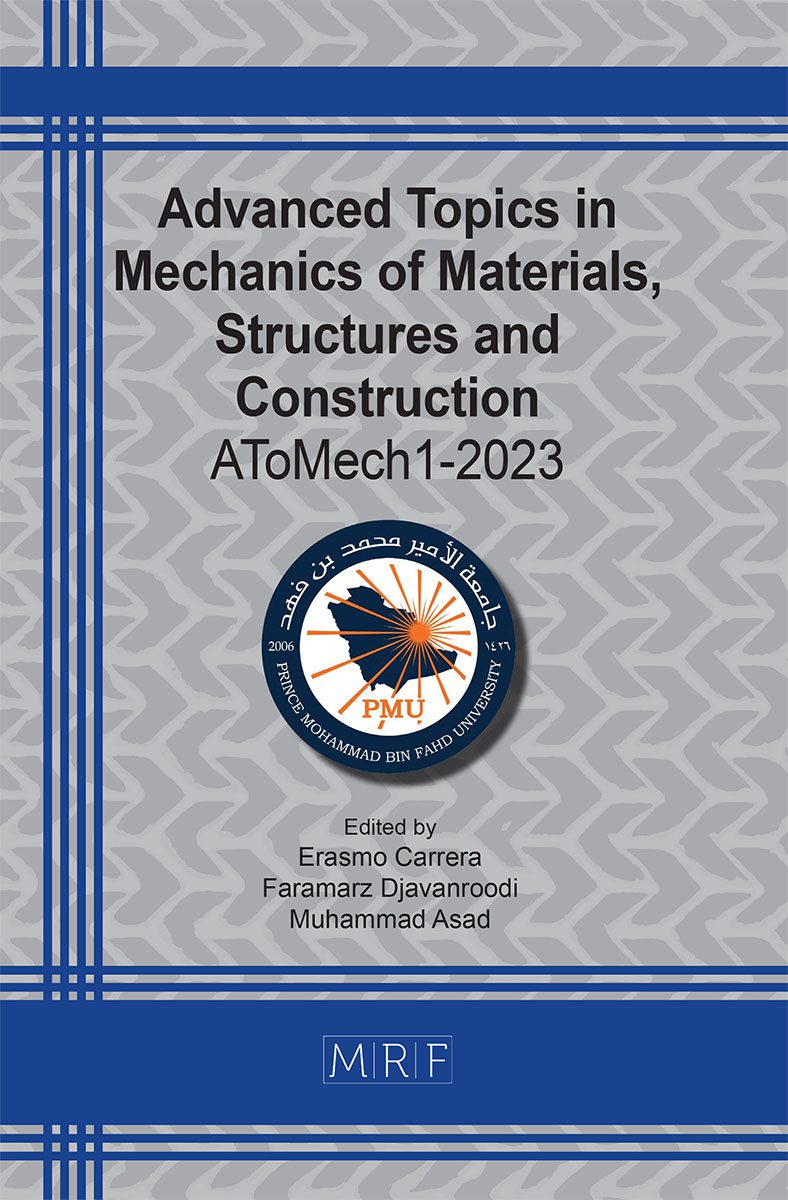Ultrasonic pulse velocity (UPV) and initial rate of water absorption (IRA) of foam concrete containing blended cement
Y. Sunarno, M.W. Tjaronge, R. Irmawaty, A.B. Muhiddin, M.A. Caronge, M. Tumpu
download PDFAbstract. The adverse environmental effects caused by cement production activities could be minimized by reducing the use of cement in the concrete mix, replacement with eco-friendly materials, and making low-unit weight cement-derived products. During the cement production activities, fly ash can also be used by mixing it in form of Portland Composite Cement (PCC)/blended cement products or directly in the concrete mixing process. Furthermore, in low-unit weight concrete, foam concrete is usually obtained using an agent that forms random air bubbles in the cement paste and is applied in construction according to its structural function. Therefore, this research aims to study and analyze the correlation between unit weight and non-destructive tests (NDTs) value on foam concrete with variations in the use of cement, namely OPC, PCC-1, PCC-2, and OPC+FA. The quality of the foam concrete was evaluated by non-destructive tests, there are Ultrasonic Pulse Velocity (UPV) and Initial Rate of Water Absorption (IRA). The results show that UPV value of all specimens is directly proportional to its unit weight and varied inversely to the IRA value.
Keywords
Blended Cement, Fly Ash, NDTs, UPV, IRA
Published online 8/10/2023, 10 pages
Copyright © 2023 by the author(s)
Published under license by Materials Research Forum LLC., Millersville PA, USA
Citation: Y. Sunarno, M.W. Tjaronge, R. Irmawaty, A.B. Muhiddin, M.A. Caronge, M. Tumpu, Ultrasonic pulse velocity (UPV) and initial rate of water absorption (IRA) of foam concrete containing blended cement, Materials Research Proceedings, Vol. 31, pp 571-580, 2023
DOI: https://doi.org/10.21741/9781644902592-59
The article was published as article 59 of the book Advanced Topics in Mechanics of Materials, Structures and Construction
![]() Content from this work may be used under the terms of the Creative Commons Attribution 3.0 license. Any further distribution of this work must maintain attribution to the author(s) and the title of the work, journal citation and DOI.
Content from this work may be used under the terms of the Creative Commons Attribution 3.0 license. Any further distribution of this work must maintain attribution to the author(s) and the title of the work, journal citation and DOI.
References
[1] Deja, J., et al. 2010. CO2 Emissions from Polish Cement Industry. International Journal of Greenhouse Gas Control 4: 583-588. https://doi.org/10.1016/j.ijggc.2010.02.002
[2] Ramamurthy K.E.K., Kunhanan and Nambiar, G. Indu Siva Ranjani. 2009. Classification of studies on properties of foam concrete, Cem. Concr. Compos. 31 (6): 388-396 https://doi.org/10.1016/j.cemconcomp.2009.04.006
[3] Tumpu M. and Mabui D. S. 2022. Effect of Hydrated Lime (Ca(OH)2) on Compressive Strength of Geopolymer Concrete. AIP Conference Proceedings 2391, 070011 (2022). https://doi.org/10.1063/5.0086702
[4] Sunarno Y., Tjaronge M. W. and Irmawaty R. 2020. Preliminary study on early compressive strength of foam concrete using Ordinary Portland Cement (OPC) and Portland Composite Cement (PCC). IOP Conf. Ser.: Earth Environ. Sci. 419. https://doi.org/10.1088/1755-1315/419/1/012033
[5] Sunarno Y., Tjaronge M. W., Irmawaty R. and Muhiddin A.B. 2022. (2022). Unit Weight of Foam Concrete Containing Blended Cement and Fly Ash. Jurnal Teknik Sipil & Perencanaan 24 (1) (2022) p 36 – 41. https://doi.org/10.15294/jtsp.v24i1.34664
[6] Syahrul, Tjaronge M.W., Djamaludin R., Amirudin A.A. 2021. Flexural behavior of normal and lightweight concrete composite beams Civil Engineering Journal (Iran), 7(3), pp-559. https://doi.org/10.28991/cej-2021-03091673
[7] Amirudin A.A, Parung H., Tjaronge M.W., Mansyur M., Tumpu M. 2022. Influence of prefabricated foam concrete as infilled wall on the strength due to cyclic loading. International Journal of GEOMATE. 22, pp 114-121. https://doi.org/10.21660/2022.93.j2343
[8] Mansyur M., Tjaronge M.W., Irmawaty R., Amirudin A.A. 2022. Performance of prefabricated foam concrete as an infilled wall under cyclic lateral loading. International Journal of Engineering, Transaction B: Applications, 35(2), pp 332-343. https://doi.org/10.5829/IJE.2022.35.02B.09
[9] Hannachi dan Guetteche, 2012. Application of the Combined Method for Evaluating the Compressive Strength of Concrete on Site. Open Journal Civil Engineering. Vol.2 No. 1, March 2012.
[10] Gebretsadik, B.T. 2013. Ultrasonic Pulse Velocity Investigation of Steel Fiber Reinforced Self Compacted Concrete. University of Nevada, Las Vegas. UNLV Theses, Dissertations, Professional Papers, and Capstones.
[11] Lin, Y., Kuo, S.-F., Hsiao, C.3., Lai, C.-P., 2007. Investigation of pulse velocity- strength relationship of hardened concrete. ACI Mater. J. 104 (No. 4), 344-350. https://doi.org/10.14359/18823
[12] ASTM C 597, 2016. 2016. Standard Method for Pulse Velocity Through Concrete.
[13] ASTM C642-97. 1997. Standard Test Method for Unit Weight, Absorption, and Voids in Hardened Concrete.
[14] Raimondo M., Dondi M., Gardini D., Guarini G., Mazzanti F. 2009. Predicting the initial rate of water absorption in clay bricks. Construction and Building Materials 23 (2009) 2623-2630 https://doi.org/10.1016/j.conbuildmat.2009.01.009
[15] ASTM C 618-05. 2005. Standard Specification for Coal Fly Ash and Raw or Calcined Natural Pozzolan for Use in Concrete.
[16] ACI 213R-87.1999. Guide for Structural Lightweight Aggregate Concrete, 1999.
[17] ASTM C 67. Standard Test Method for Sampling and Testing Brick and Structural Clay.
[18] ACI 228.2R-13. 2013. Report on Nondestructive Test Methods for Evaluation of Concrete in Structures
[19] ASTM C90. 2010. Standard Specification for Load-bearing Concrete












